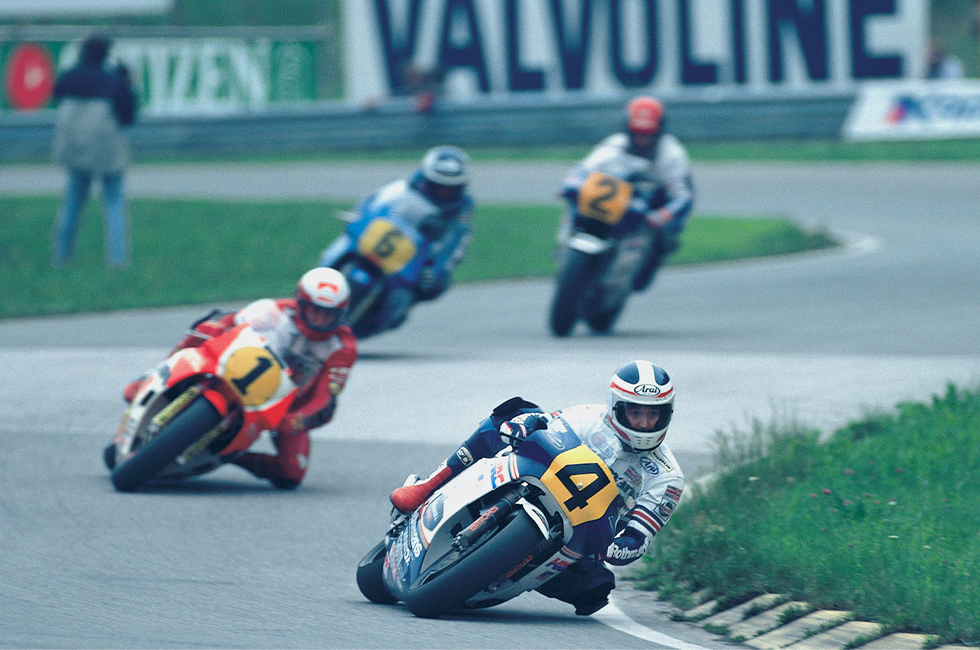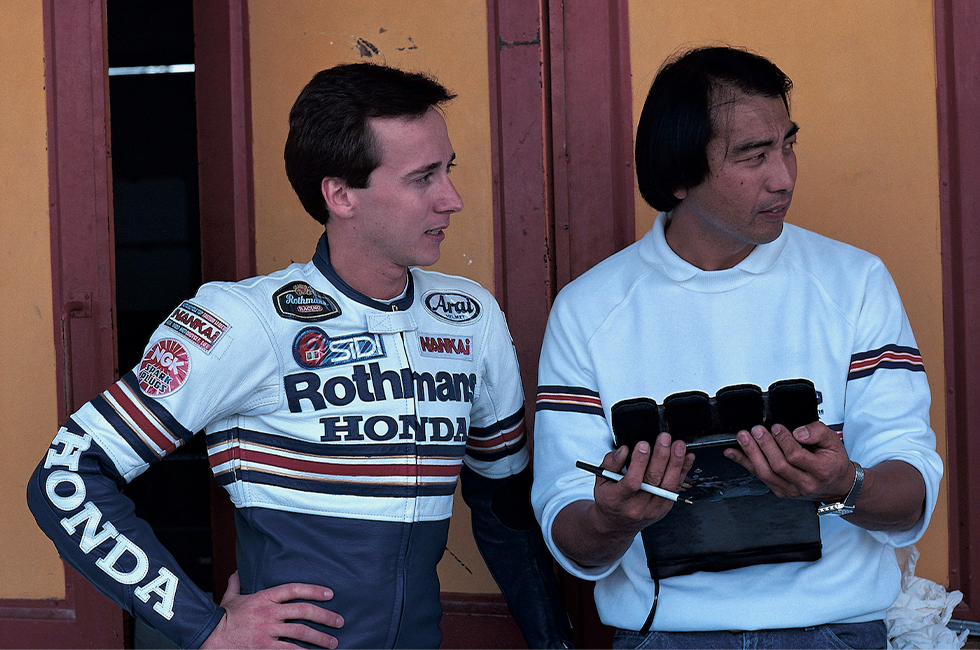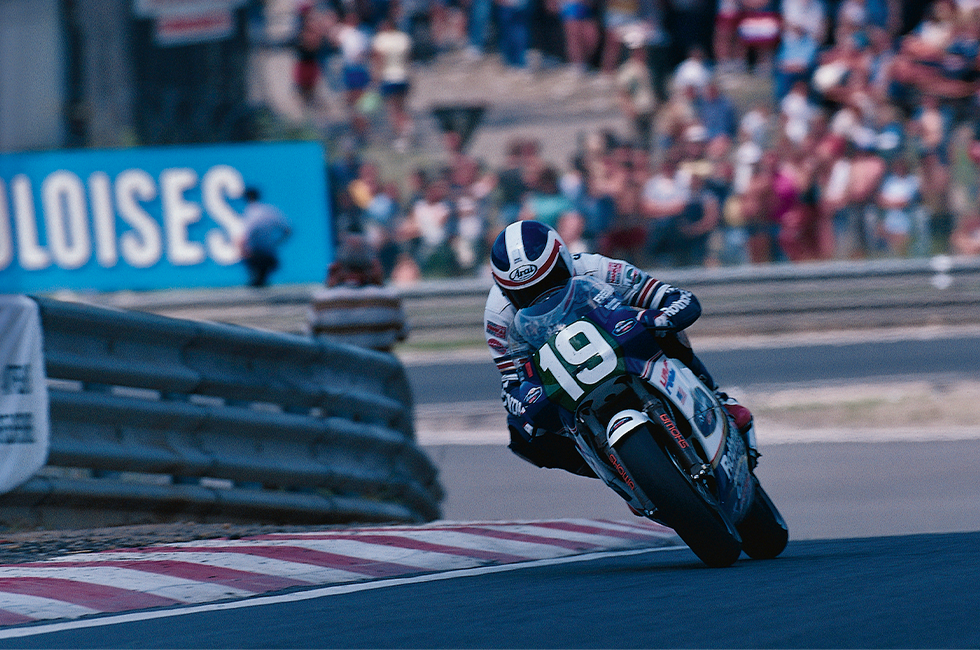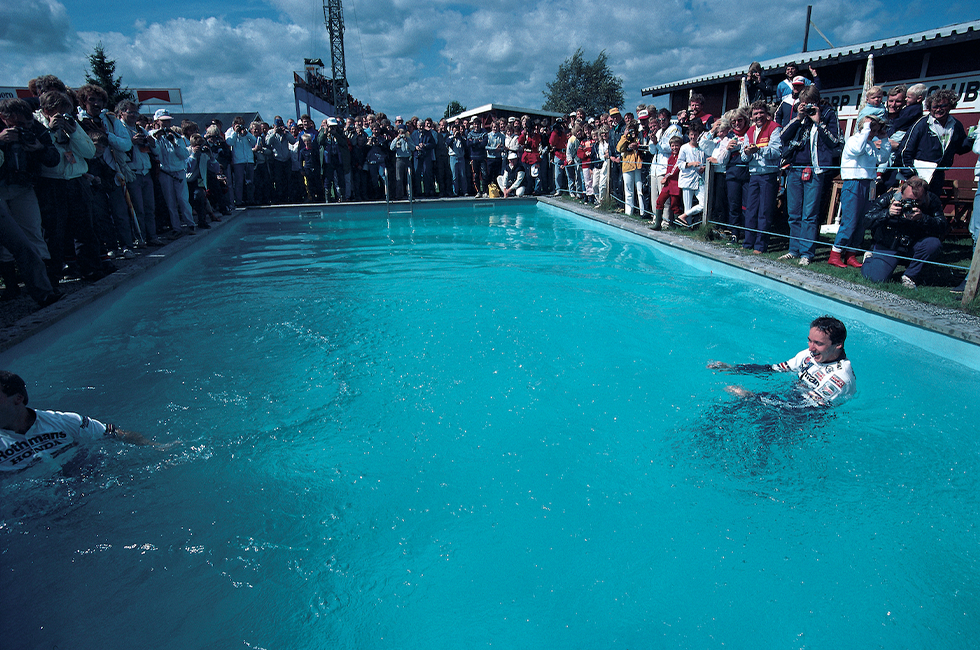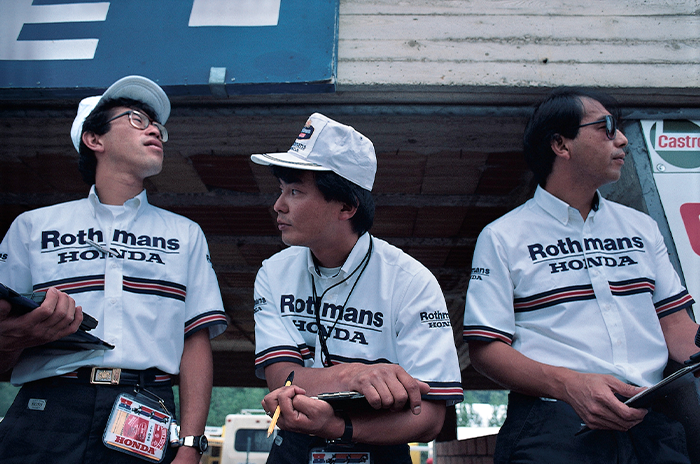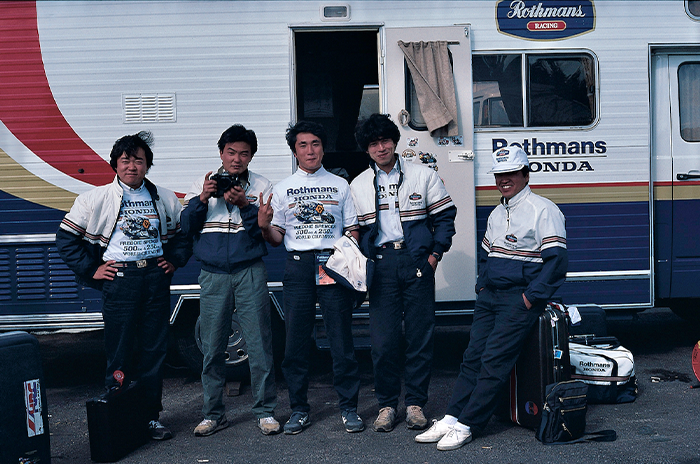Honda has been sending engineers involved in developing works machines to the race site since it first began participating in the World Grand Prix Road Race. Then, in 1985, when they introduced the NV0B, the new name "technical support" was given to clarify the job. The primary role is to understand the operation of works machines in actual races and to absorb requests from the field.
Yoshikazu Miyajima and Kaoru Yamamoto were in charge of technical support at the 1985 World Grand Prix. Both were engineers involved in chassis design for GP road racers since joining HRC. Miyajima was in his fifth year with the company and Yamamoto in his fourth, so both were in their mid-twenties. It is believed that HRC's aim in appointing them to technical support in the first year of its operations was to have these young designers learn firsthand what it was like in a Grand Prix race, where the bikes they made were used.
"Miyajima was in charge of the first half of the season, and I was in charge of the second half," Yamamoto recalls. "Seeing Freddie ride the machine we had drawn up at incredible speed, I understood what was happening in the race and why problems would occur. It's not easy because it's a job, but Freddie's speed was overwhelming, and the machines, NV0B and NV1A, didn't have many problems, so I had more leeway than I thought. I was not used to the European and World Grand Prix races, but it was an excellent experience, and although it was hard, it was fun."
The following year, in 1986, HRC began an activity called SWS, Special Works Support, where they loaned out works machines to leading independent racing teams for a fee and let them run. The function of supporting this would also be fulfilled as technical support work.

